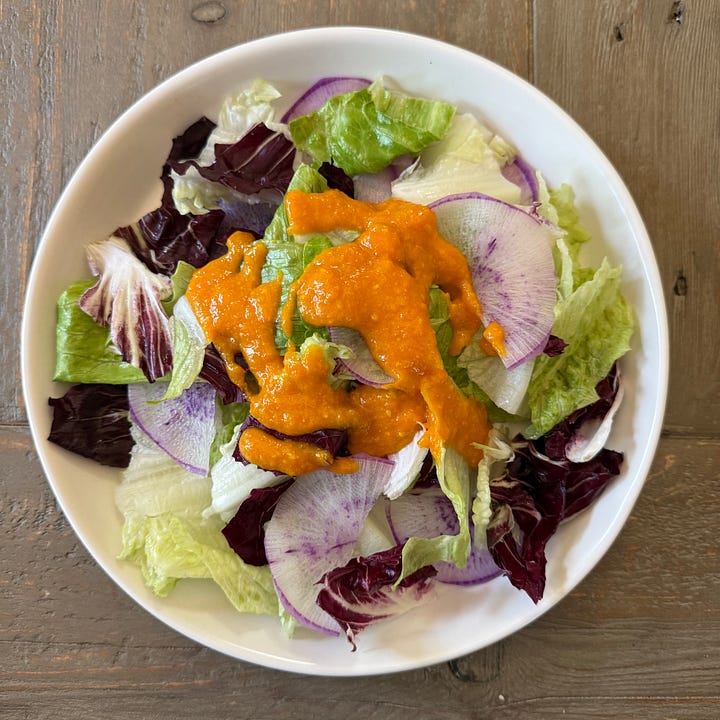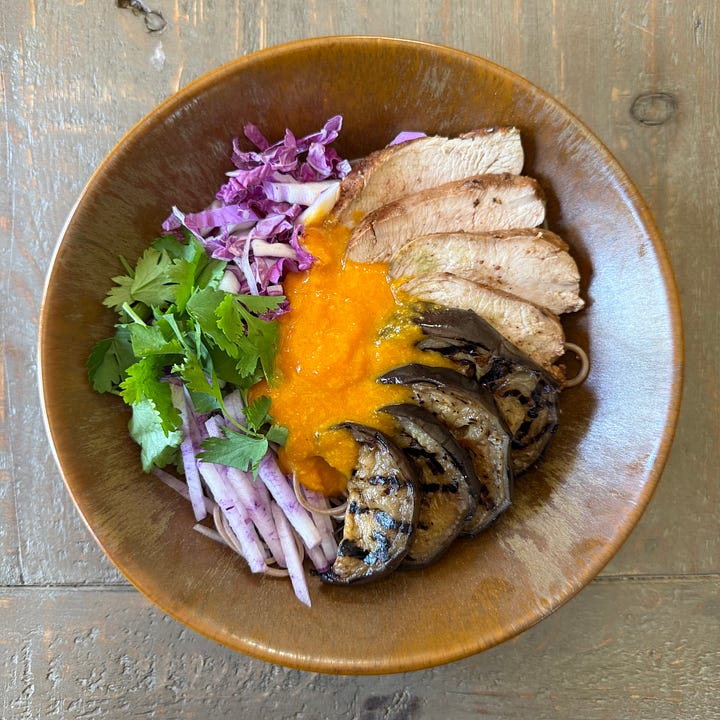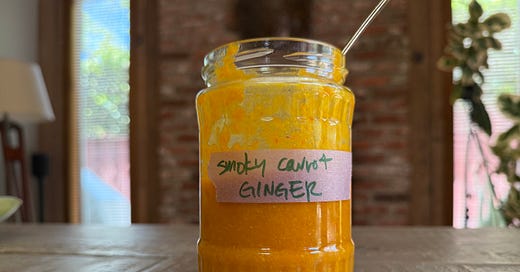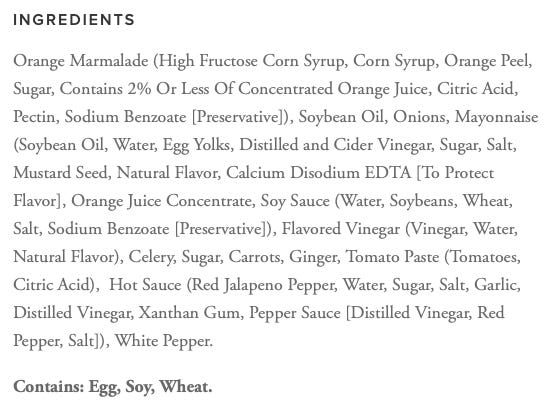Years in the making, a keeper Japanese orange dressing
carrot-ginger salad dressing + soba noodle salad + salad blueprint
A keeper recipe is one you never tire of. You return to it because it surprises and delights you in its good taste and friendliness. It’s attractive, goes with a bunch of things, and you can play around with it without messing it up. That’s what this Japanese salad dressing offers. It’s a congenial keeper with a quirky history.
I bet you’ve had it many times but like me, didn’t know what it was.
If you’ve eaten at a Japanese restaurant and ordered a set meal of teriyaki and or tempura with miso soup and rice, you’ve likely also had a small side salad of crisp lettuce topped with a creamy orange dressing that was slightly sweet with a hint of spice. Rory and I became familiar with the humble salad in Los Angeles at beloved casual Japanese restaurants like Ai in South Pasadena and Suehiro Cafe in Little Tokyo.
Yoshoku makeovers and takeovers
I used to think the orange dressing was a riff on French dressing but it’s something else. The dressing is part of the Japanese yoshoku genre of western-style of cooking that marries East and West. Dishes such as omurice (omelette rice), macaroni salada (you guessed it, macaroni salad), and doria (a French gratin made with rice instead of potato) are Japanese makeovers of Western classics.
Yoshoku developed around the mid 1800s as Westerners began coming to Japan. Japanese military cooks also learned about non-Japanese ideas from foreign soldiers. Some Japanese people traveled abroad and brought ideas back home.
One person was Toichiro Nakashima. In 1910, he was sent to the United States and United Kingdom as an intern for Japan’s Department of Agriculture and Commerce. He fell hard for all the delicious orange marmalade and mayonnaise that he sampled. During that time in Japan, when MSG was introduced, the country was trying to ensure its population grew healthily. How could people cook tasty food with less effort? Nakashima launched Kewpie mayonnaise in 1925 with a campaign that it got people to eat better, more nutritious food. Just add kewpie mayo to make boring food exciting. That still holds true today.
According to the Kewpie timeline, the company also launched a marmalade (1932) and a French dressing (1958), which boasted that it was the first Japan-made salad dressing. It’s unclear whether Kewpie directly inspired the orange dressing that became popular in the United States.
I looked around and son of a gun — one “orange ginger dressing” that originated at Makoto Japanese Steakhouse in Melbourne, Florida, in 1985 employs the marmalade and mayo (M&M) pairing. Sold at certain supermarkets, here are the ingredients from the company’s website:
While there are some natural ingredients, I don’t want to replicate that recipe, for you or me! Maybe that's what I ate in the 1980s and early 90s but that’s not what I want to cook and eat now. We home cooks — you and I — can do better than whirl together marmalade, frozen orange juice concentrate, and mayonnaise.
As an alternative to the M&M dressing, the Japanese have a fresher, healthier approach which relies on carrot for its color and sweetness, plus lots of ginger for zip. Kewpie currently makes a version of that dressing sold only in Japan.
Not a problem for you or me because I’ve been playing around with the dressing for a couple years, since developing one for a Food & Wine article.
Carrot-ginger dressing 1.0 was good but I actually wanted to pump up the flavor. However, I needed to stay somewhat true to its origin so I let it be for the magazine. Sometimes you need to just respect a cuisine for what it is.
You’re the benefit of my holding back. This week, wanting (needing) a multipurpose springtime dressing, I revisited the dressing. The yoshoku notion of fluidly melding East and West opened the door for me to aggressively play with the recipe.
Compared to v 1.0, the new Carrot-Ginger Dressing 2.0 has bigger flavor, a more velvety texture, and an alluring hint of smoke. I’ve been letting the dressing make its imprint on incredible spring produce sourced from our local farmer’s market, health food store, and supermarket. A sample of the vibrant dishes:




The carrot-ginger dressing has many positives, including these
Prepared from supermarket ingredients, including gut-friendly ones
Can go with so many things — on a crisp salad, tangly noodles, grilled veggies or grilled proteins, and as a dip with veggies
Is creamy but not heavy tasting
Turns simple salad fixings into center-stage worthy food (eat more veggies!)
Keeps for a good week (make it on Sunday to for quick meals during the week)
Takes about 15 minutes from beginning to end
Makes beautiful, flavorful food to deliver joy year round
We’ve eaten the dressing in so many different ways for days with no boredom in sight and I think you will too. Below you’ll get:
Technical explainers and ingredient pointers
2 recipes for the dressing and noodle bowl in text and as a downloadable PDF
A detailed blueprint for building countless salads
Let’s make a batch!






